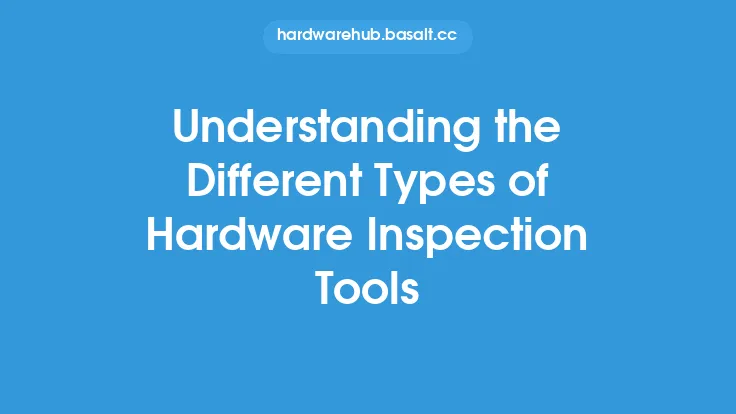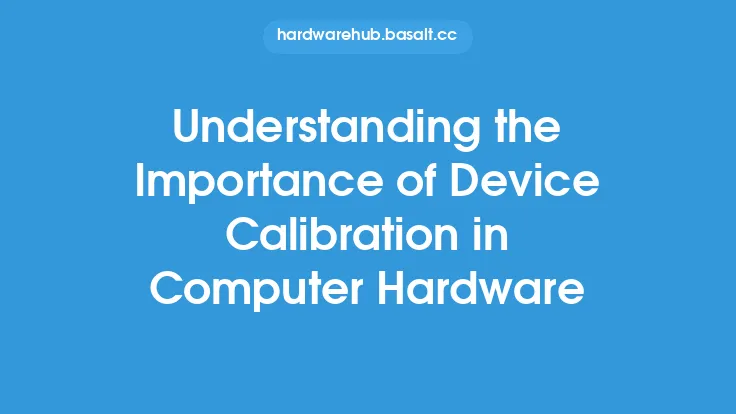When it comes to hardware maintenance, having the right support in place is crucial to ensure that devices and systems function optimally and minimize downtime. Hardware support refers to the assistance provided by manufacturers, vendors, or third-party providers to help users troubleshoot, repair, and maintain their hardware devices. There are several types of hardware support available, each with its own set of benefits and limitations. Understanding these different types of support is essential to choose the right one for your specific needs.
Types of Hardware Support
There are several types of hardware support, including on-site support, remote support, phone support, and email support. On-site support involves a technician visiting the user's location to diagnose and repair the issue. This type of support is typically more expensive than other options but provides the most personalized and hands-on assistance. Remote support, on the other hand, involves a technician accessing the user's device remotely to troubleshoot and repair the issue. This type of support is often faster and more cost-effective than on-site support. Phone support and email support involve users contacting the support team via phone or email to report issues and receive assistance.
Levels of Hardware Support
Hardware support can also be categorized into different levels, including basic support, standard support, and premium support. Basic support typically includes access to online resources, such as user manuals and FAQs, as well as limited phone or email support. Standard support usually includes 24/7 phone support, email support, and remote support, as well as access to online resources. Premium support, on the other hand, includes all the features of standard support, plus additional benefits such as on-site support, dedicated account management, and priority access to support resources.
Technical Support
Technical support is a critical component of hardware support, involving the assistance provided by trained technicians to help users troubleshoot and repair technical issues. Technical support can be provided via phone, email, or remote access, and may involve the use of specialized tools and software to diagnose and repair issues. Technical support teams typically consist of experienced technicians with in-depth knowledge of hardware devices and systems, as well as excellent communication and problem-solving skills.
On-Site Support
On-site support involves a technician visiting the user's location to diagnose and repair the issue. This type of support is typically more expensive than other options but provides the most personalized and hands-on assistance. On-site support is often required for complex issues that cannot be resolved remotely, such as hardware repairs or upgrades. On-site support technicians typically carry a range of spare parts and tools to ensure that issues can be resolved quickly and efficiently.
Remote Support
Remote support involves a technician accessing the user's device remotely to troubleshoot and repair the issue. This type of support is often faster and more cost-effective than on-site support, as it eliminates the need for a technician to travel to the user's location. Remote support typically involves the use of specialized software to access the user's device, as well as communication tools such as phone or chat to facilitate communication between the technician and the user.
Hardware Support for Specific Devices
Different devices and systems require different types of hardware support. For example, servers and data storage systems typically require more comprehensive and specialized support than desktop computers or laptops. This is because these devices are critical to business operations and require high levels of uptime and reliability. Support for these devices may include features such as 24/7 monitoring, priority access to technical support, and on-site support.
Third-Party Hardware Support
Third-party hardware support refers to support provided by companies or individuals that are not the original manufacturer of the device. This type of support can be a cost-effective alternative to manufacturer-provided support, as third-party providers often offer similar levels of support at a lower cost. However, third-party support may not always be available for all devices or systems, and may not provide the same level of expertise or access to specialized resources as manufacturer-provided support.
Best Practices for Hardware Support
To get the most out of hardware support, it's essential to follow best practices such as regularly updating device drivers and software, performing routine maintenance tasks, and documenting issues and resolutions. Users should also have a clear understanding of their support options and the level of support they require, as well as the costs and benefits associated with each option. Additionally, users should ensure that they have a support contract or agreement in place that outlines the terms and conditions of support, including response times, resolution times, and communication protocols.
Conclusion
In conclusion, understanding the different types of hardware support is essential to choose the right one for your specific needs. Whether you require on-site support, remote support, or technical support, there are a range of options available to ensure that your devices and systems function optimally and minimize downtime. By following best practices and selecting the right type and level of support, users can ensure that they receive the assistance they need to troubleshoot and repair issues, and get the most out of their hardware devices.





